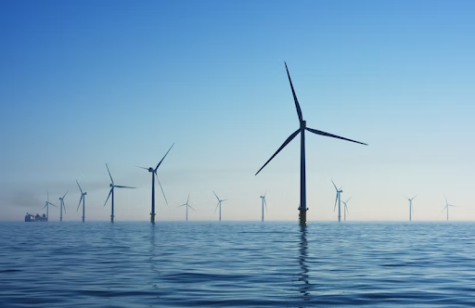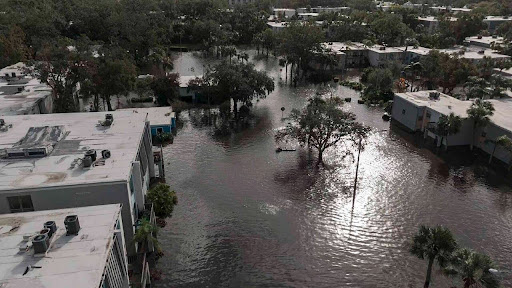
New York’s first offshore wind pipeline is underway. There are currently five wind farms in active development set to bring 4,300 megawatts of energy to the state. According to the New York State website, these turbines are set to cover “almost 50 percent of the capacity needed to meet New York’s nation-leading offshore wind goal of 9,000 megawatts by 2035.”
Renewable energy has been making waves throughout the world for decades. With rapid population growth occurring for the Long Island area, this development would be essential in order to create a sustainable future. But, that’s only if wind power was actually sustainable. While the energy produced is everlasting, the turbines bring great harm to the environment around them.
According to Sinay, a Maritime Data Solution platform, wind turbines create low frequency vibrations that bring about concern for environmental scientists and activists. Sinay makes clear that the vibrations can heavily disorient marine life, “it alters their way of communicating, feeding, reproducing, and navigating the oceans. On some occasions, these changes can lead to injury or even death.”
And death among marine animals has been occuring presumably due to the installation of wind turbines, or more so the amount of industrial traffic that has been accruing in the oceans. According to the New York Times, over 23 dead whales have washed ashore on New York and New Jersey beaches since December of 2022. Leading causes discussed are the increased amounts of cargo ships due to pandemic spending, as well as the construction of wind farms.
Autopsies performed on these whales have demonstrated that some were subjects of collision with these cargo ships – which is thought to be occurring on a grander scale due to the vibrations of these industrial entities messing with the sounds the whales emit for communication, migration, etc.
But some are skeptical of whether or not these vibrations from the turbines are actually harmful to the oceans. USA Today brings up the argument that, “Conservation groups and the Bureau of Ocean Energy Management generally believe that’s nonsense, in part because the type of sound used for wind turbine placement is much weaker than the stronger signals regularly used for other purposes such as oil and gas exploration.”
Sinay points out, however, that the construction sites for this pipeline are just as problematic as oil and gas exploration, as they disturb the ocean floor and create various types of pollution through use of heavy machinery. Most of these turbines are set to be constructed 14 miles off the shore of Jones Beach, a popular South Shore public beach surrounded by other popular beaches. Not only will the landscape be altered by this pipeline, but the construction is set to take place close to where Long Islanders will be enjoying their summer days, leaving them susceptible to pollutants in the air and water, noise pollution and light pollution.
Not only is this wind farm harmful, but it’s also redundant. Much more sustainable renewable energy sources are already being explored for the Long Island area, with the Long Island Solar Roadmap in full swing. The Solar Roadmap is seeking to identify “low-impact sites for commercial and utility-scale solar arrays and shows their energy generation potential.” This plan intends to place solar sites on large rooftops, parking lots and previously worked land in hopes of obtaining 19,500 megawatts of energy without further damage to relatively untouched ecological sites. The energy to be potentially harvested from this plan is enough to power 4.8 million New York residences per year. That’s nearly four times the amount of households there are on Long Island, according to the Nassau and Suffolk County censuses. Through its noninvasive sourcing of sun power, this plan proves that wind farms are not necessary for the area.
Staying out of the ocean is the only way to be sure of no further contamination. Long Island beaches are part of what make it so desirable to people around the world – the access we have to the ocean is unlike anywhere else. Wind turbines are only here to disturb our sandy havens, creating more pollution upon their building and harvesting energy that is not needed.










jack • May 31, 2024 at 4:44 pm
there’s always nuclear that is designed to use the unspent nuclear waste we have laying around. sounds like a better idea.
Carolyn O'Regan • Jul 5, 2023 at 10:40 pm
Get rid of the wind turbines and leave ocean life alone!!!!
Nicky B • Mar 28, 2023 at 10:15 pm
Where are they getting 4.8 MILLION homes from?? 19,700MW could power about 2 million homes, tops, with an average use rate of 10kW per home. By their claims, the average usage is 2.5kW per home. That’s enough to run a fridge, a microwave, and a couple of TVs. A entire house, especially if they’re gonna force everyone to electric heat? No… Solar is not the answer and neither is wind. Give us Nuclear. Clean. Efficient.